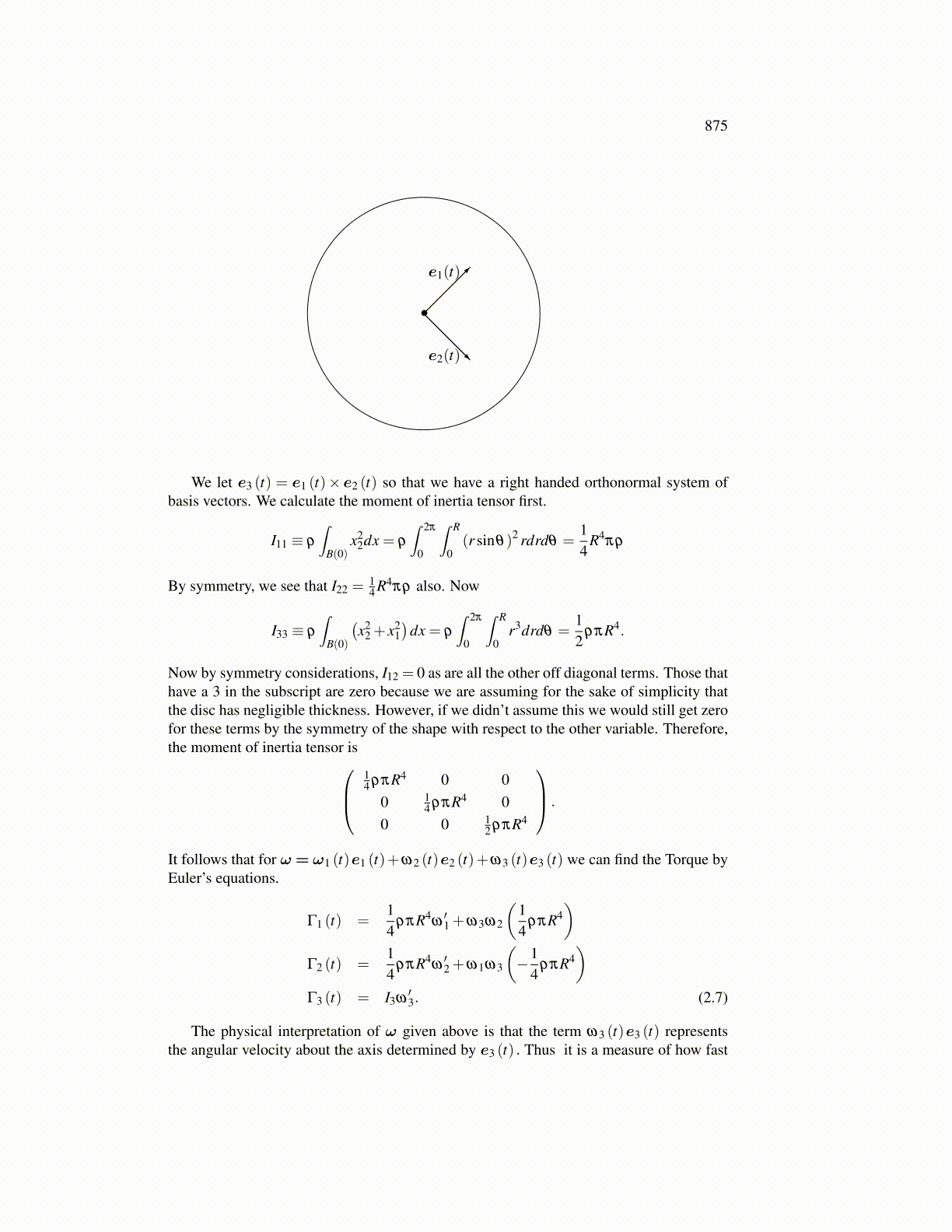
875
e1(t)
e2(t)
•
We let e3 (t) = e1 (t)× e2 (t) so that we have a right handed orthonormal system ofbasis vectors. We calculate the moment of inertia tensor first.
I11 ≡ ρ
∫B(0)
x22dx = ρ
∫ 2π
0
∫ R
0(r sinθ)2 rdrdθ =
14
R4πρ
By symmetry, we see that I22 =14 R4πρ also. Now
I33 ≡ ρ
∫B(0)
(x2
2 + x21)
dx = ρ
∫ 2π
0
∫ R
0r3drdθ =
12
ρπR4.
Now by symmetry considerations, I12 = 0 as are all the other off diagonal terms. Those thathave a 3 in the subscript are zero because we are assuming for the sake of simplicity thatthe disc has negligible thickness. However, if we didn’t assume this we would still get zerofor these terms by the symmetry of the shape with respect to the other variable. Therefore,the moment of inertia tensor is
14 ρπR4 0 0
0 14 ρπR4 0
0 0 12 ρπR4
.
It follows that for ω = ω1 (t)e1 (t)+ω2 (t)e2 (t)+ω3 (t)e3 (t) we can find the Torque byEuler’s equations.
Γ1 (t) =14
ρπR4ω′1 +ω3ω2
(14
ρπR4)
Γ2 (t) =14
ρπR4ω′2 +ω1ω3
(−1
4ρπR4
)Γ3 (t) = I3ω
′3. (2.7)
The physical interpretation of ω given above is that the term ω3 (t)e3 (t) representsthe angular velocity about the axis determined by e3 (t) . Thus it is a measure of how fast